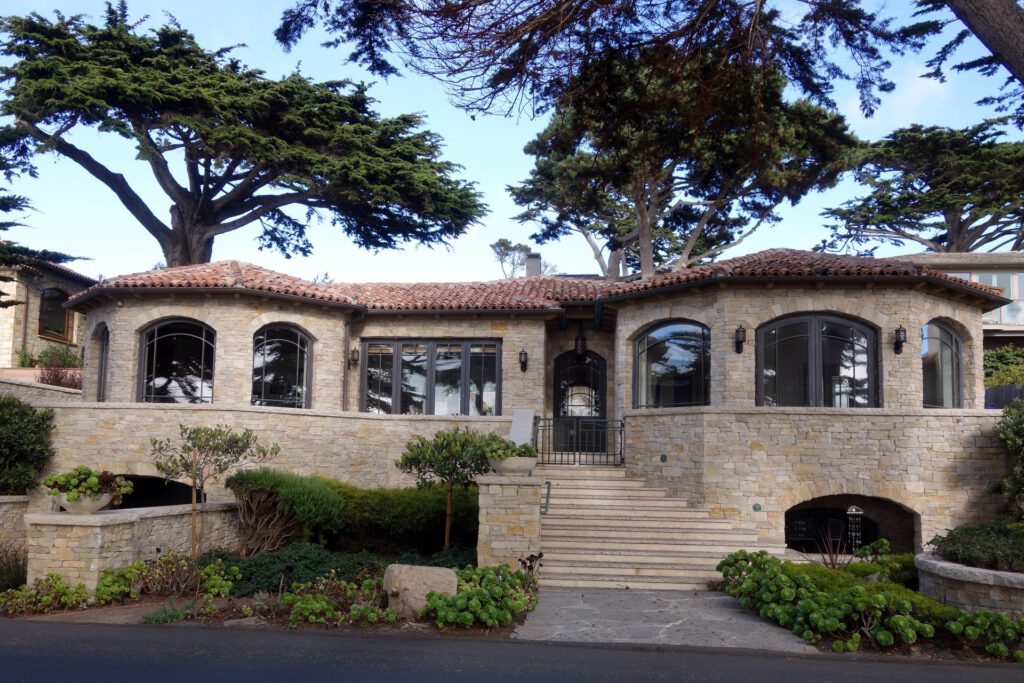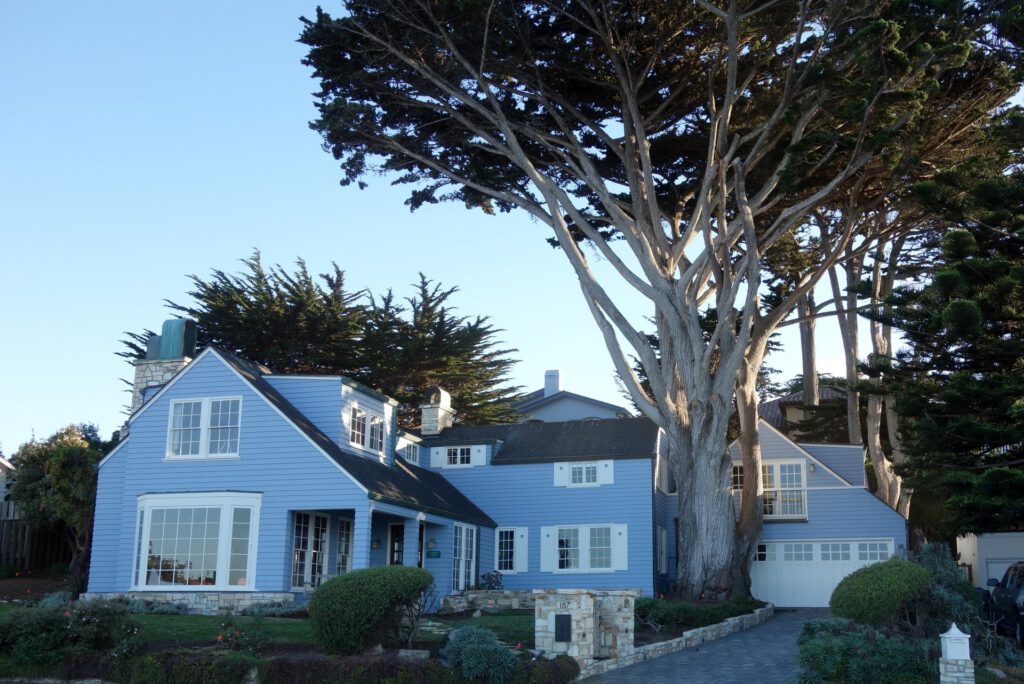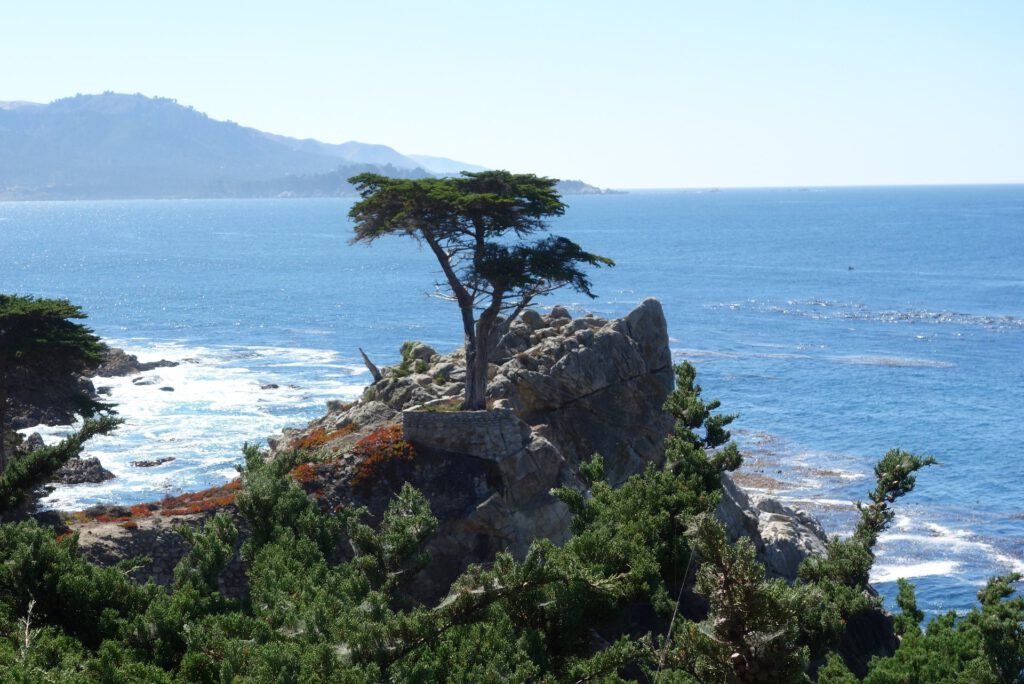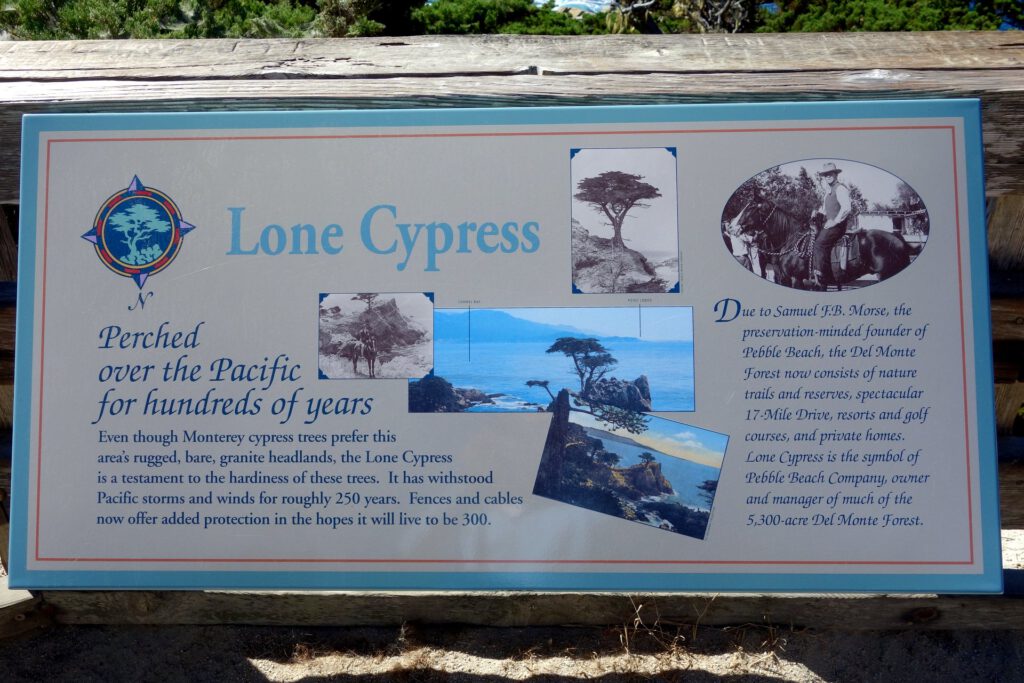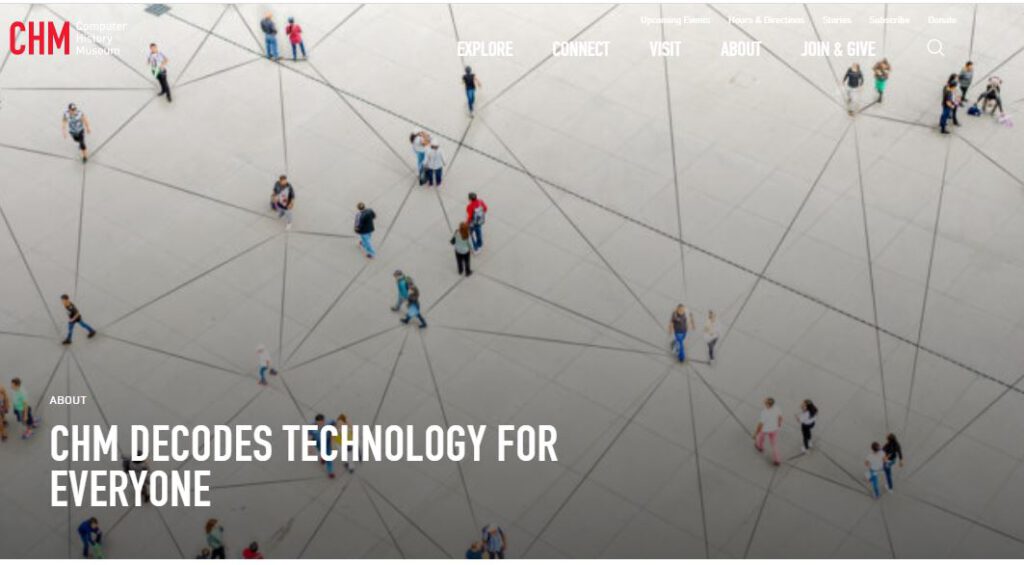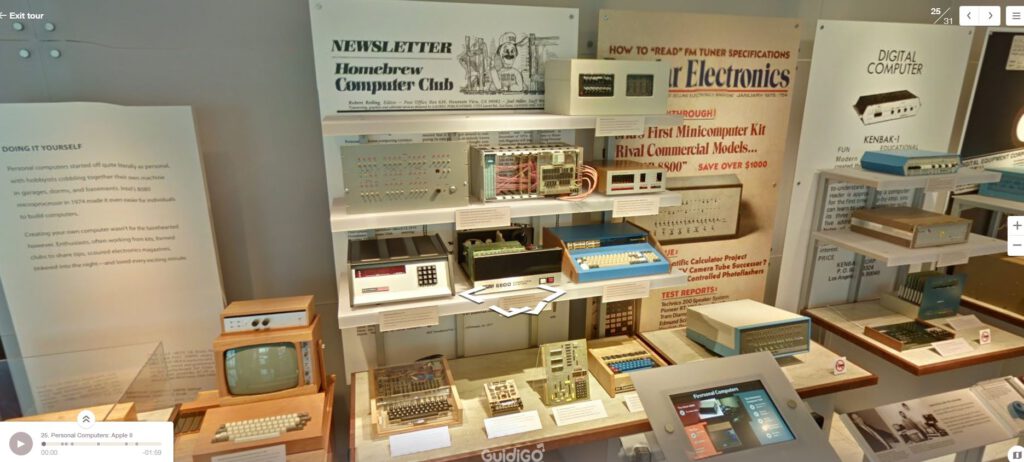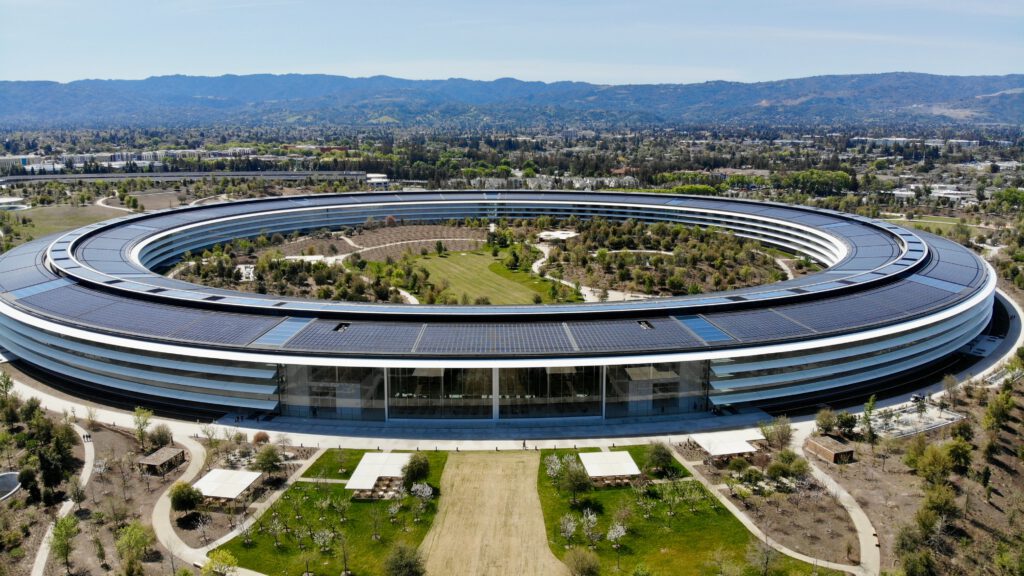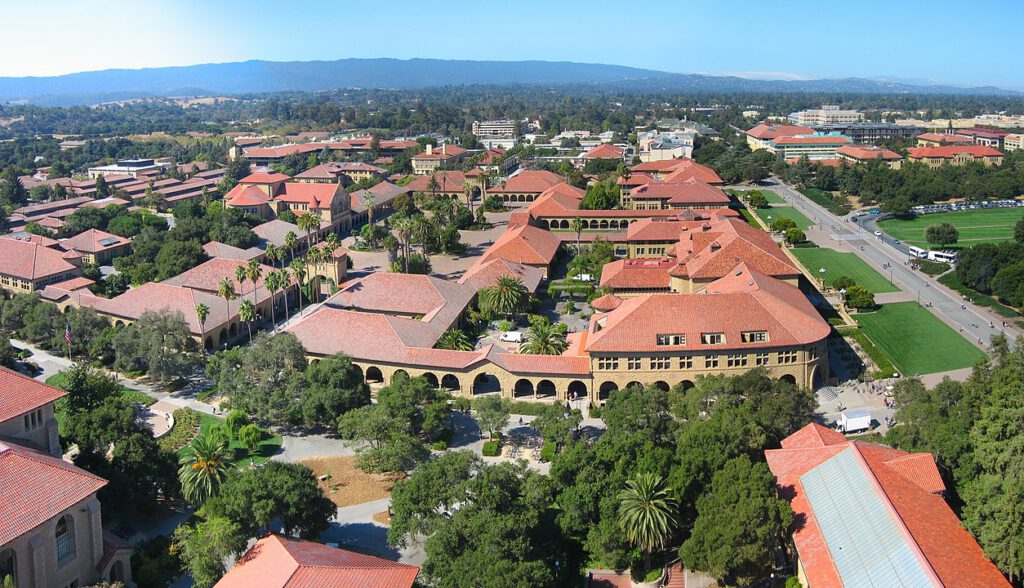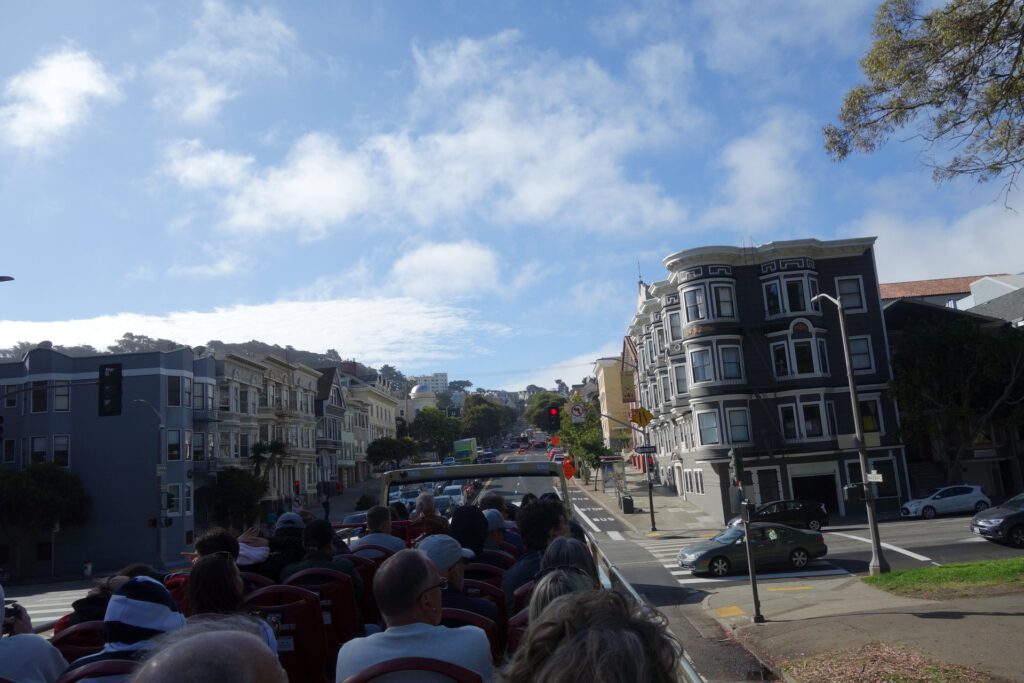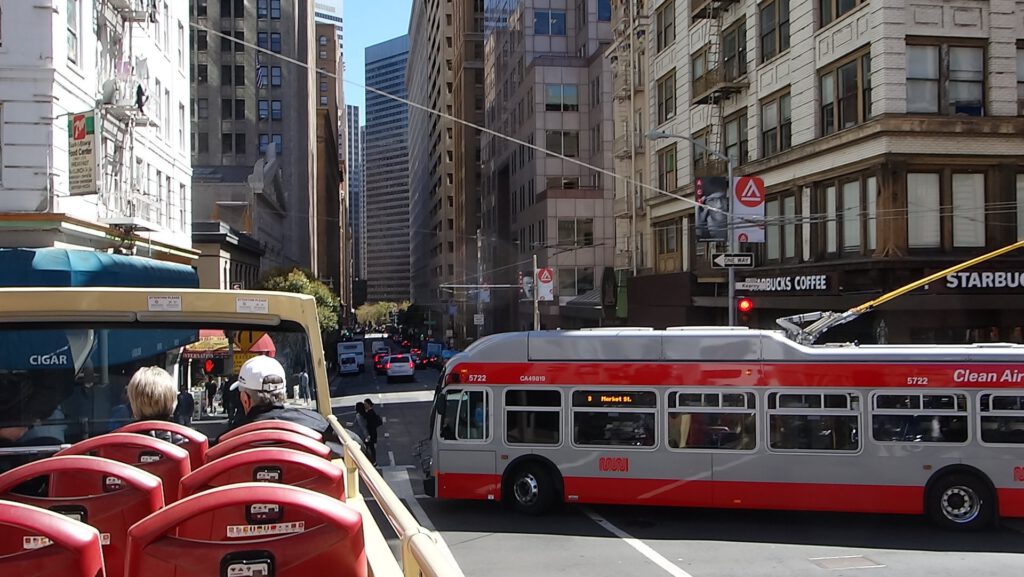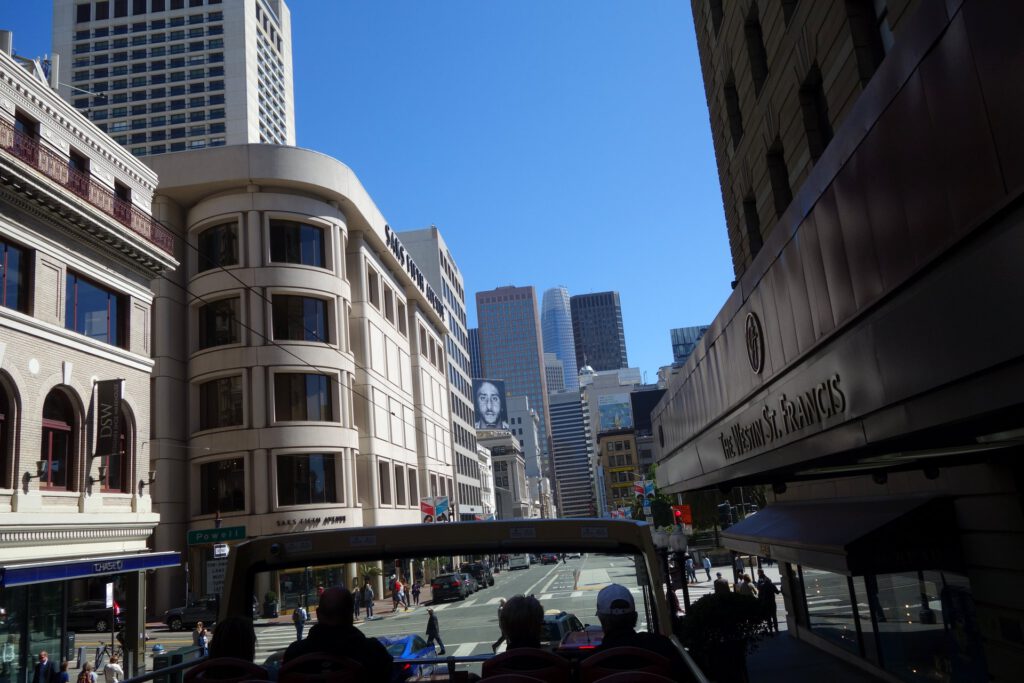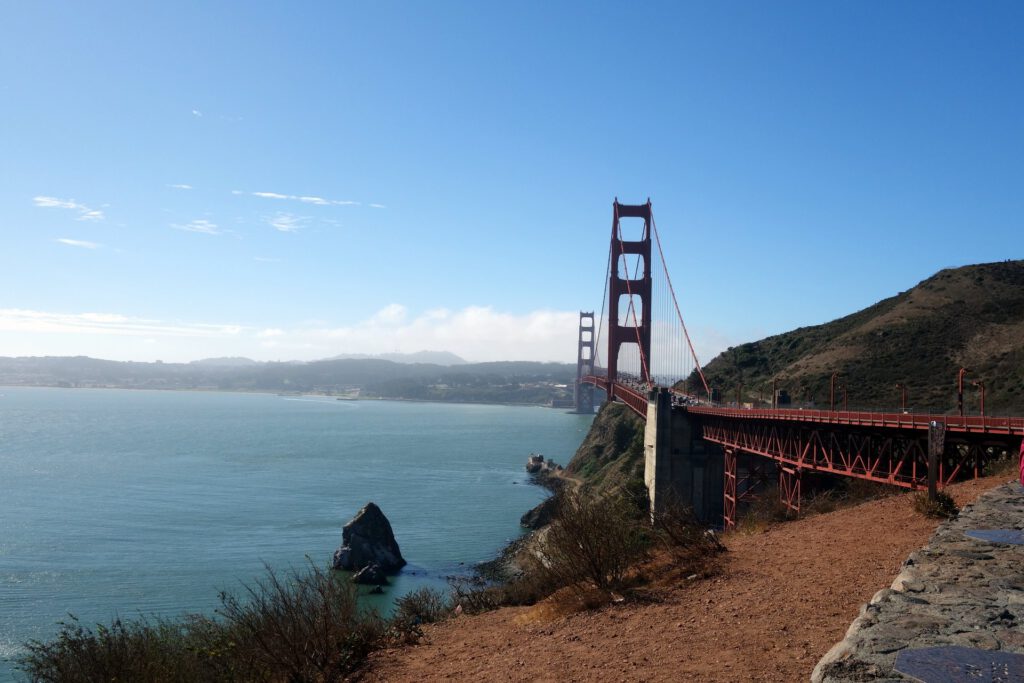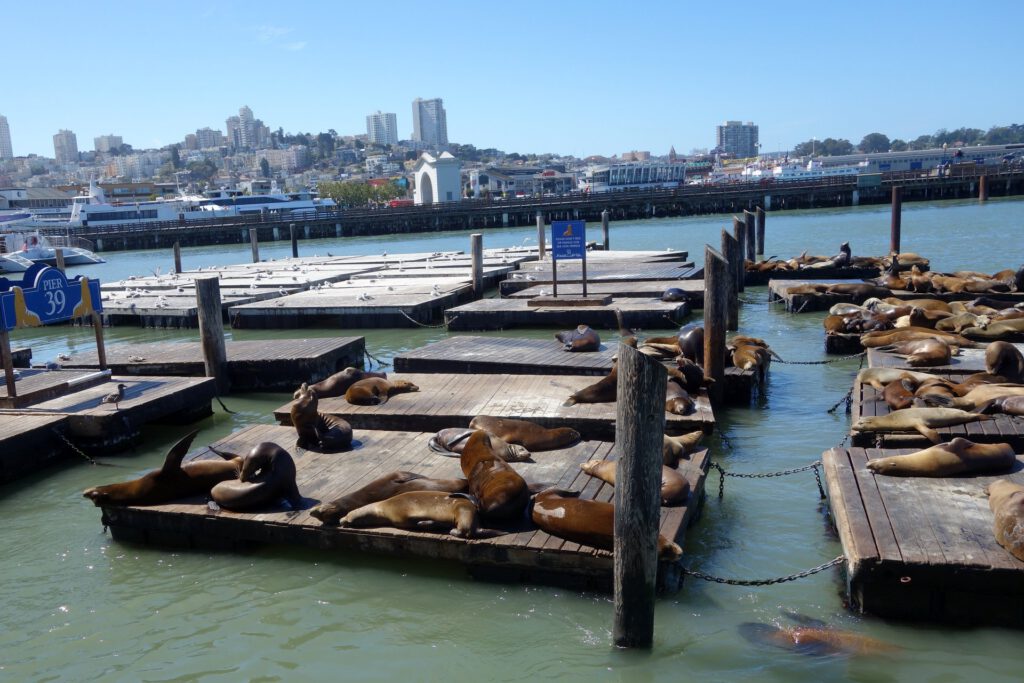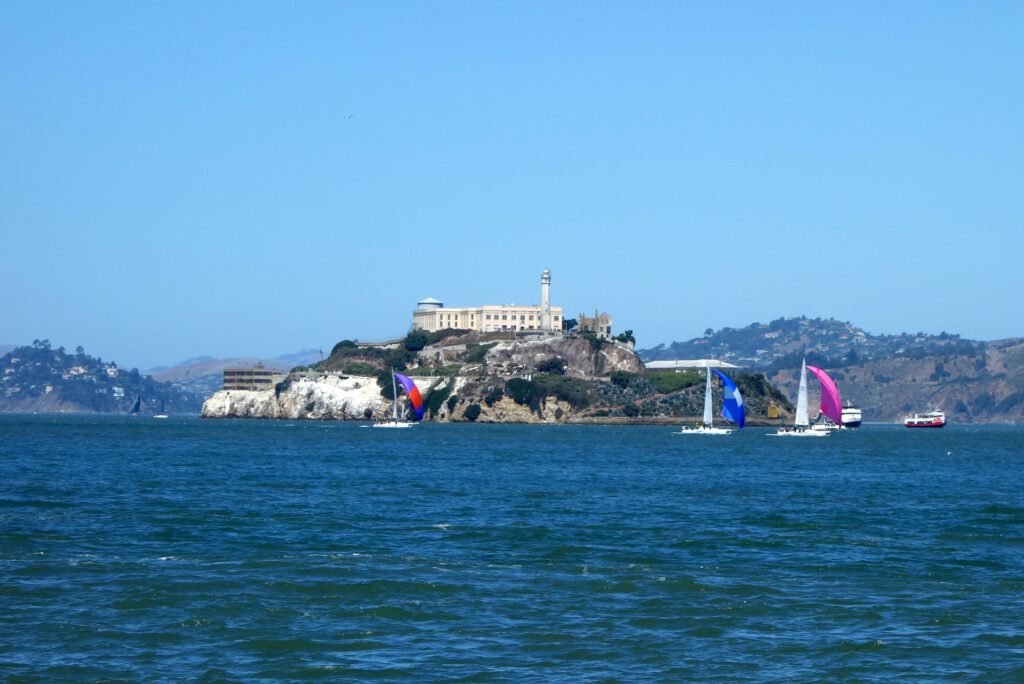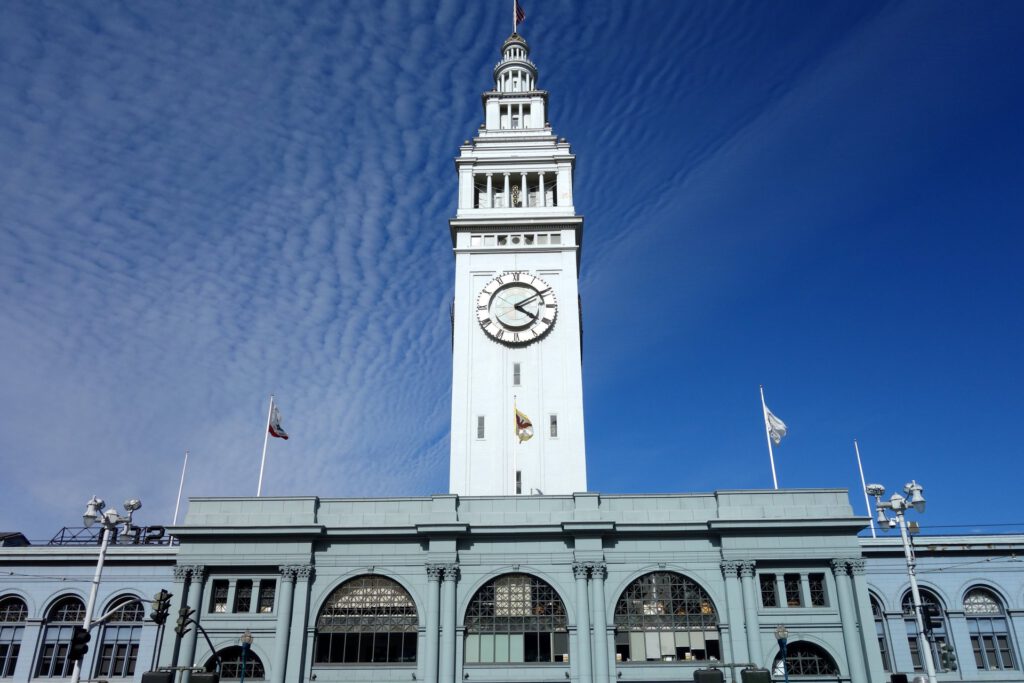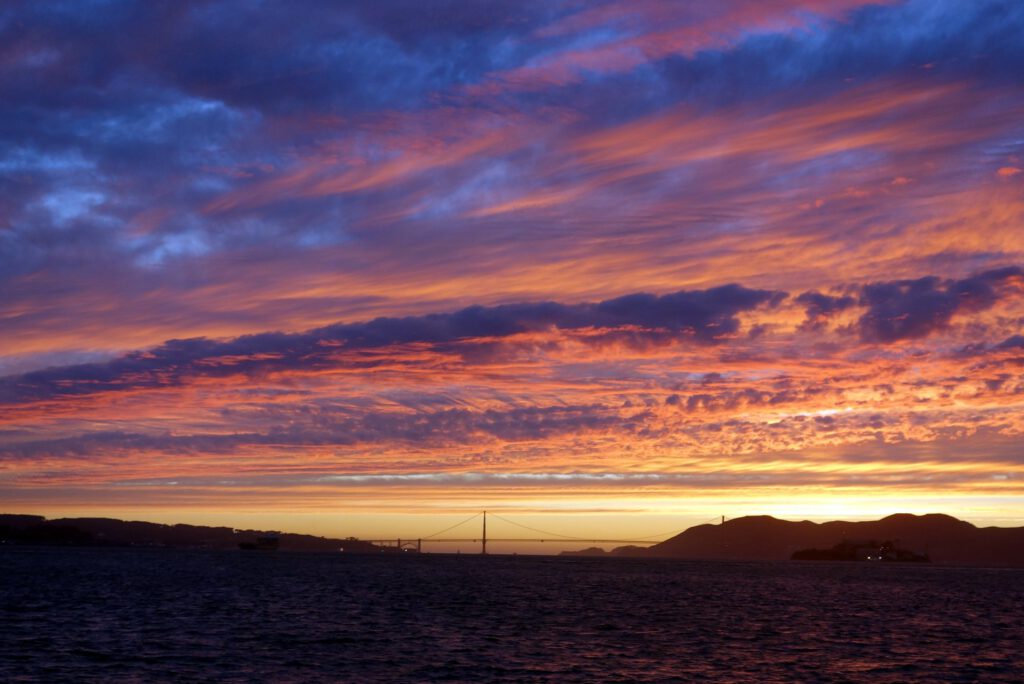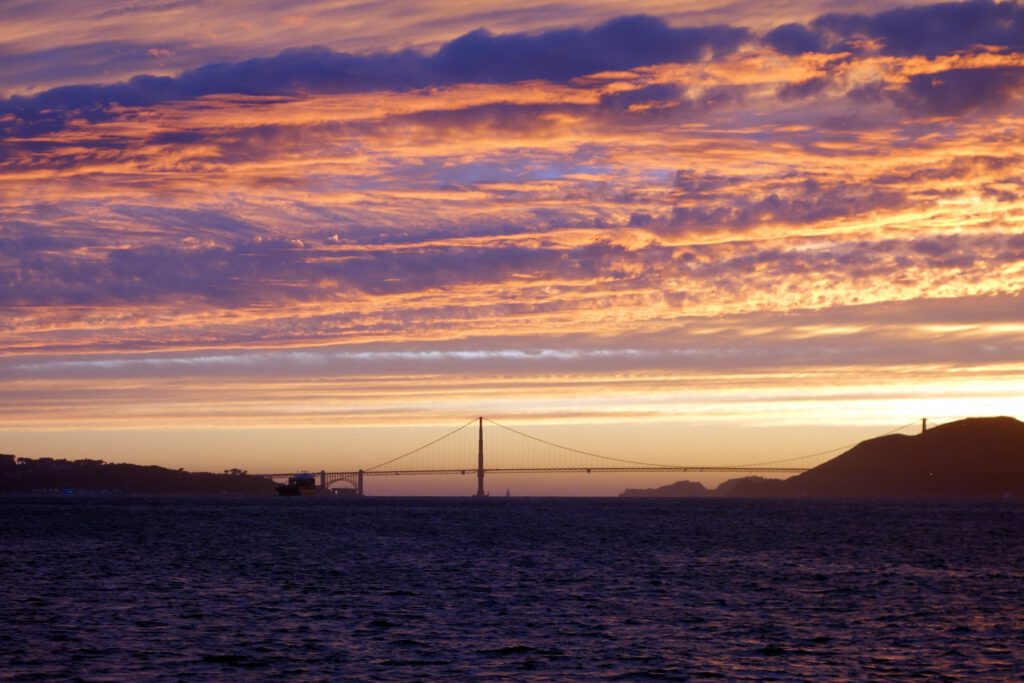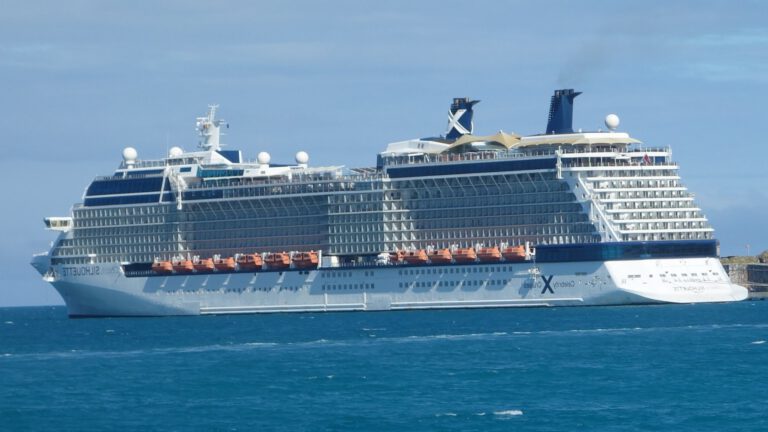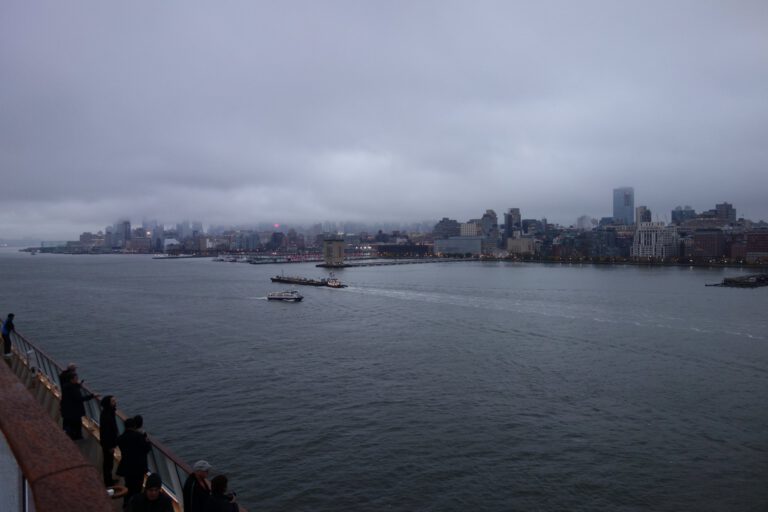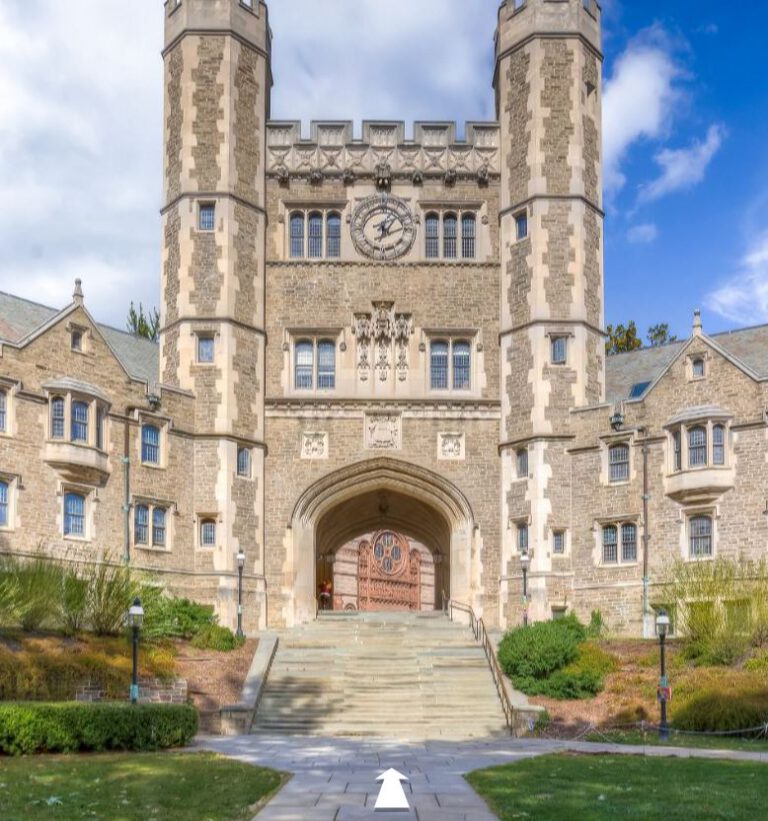mg210317
Via Highway #1 to Silicon Valley
Trips
17. March 2021
Manfred Goschler
We drove on the west coast of California on Highway 1 (California State Route 1, CA1) towards San Francisco. From Morro Bay, very attractive sections begin along a steep coast that almost extends to Monterey. I would have liked to have driven this route in a convertible so that I could enjoy this wonderful landscape even better.
Shortly before Monterey we made a longer stop for long walks in the small town of Carmel-by-the-Sea. Carmel impressed us not only because of some curiosities (no mailboxes, house numbers, street lamps, neon signs), but especially because of its very individual houses that fit harmoniously into the picturesque landscape. Trees are not felled there when new buildings are built, these are built around trees.
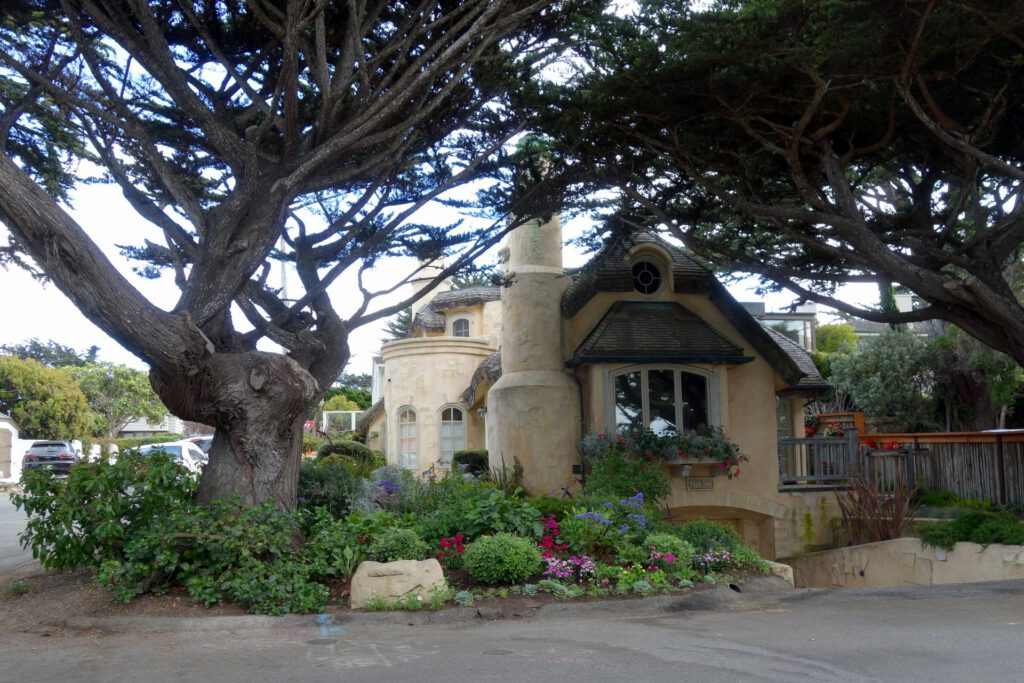
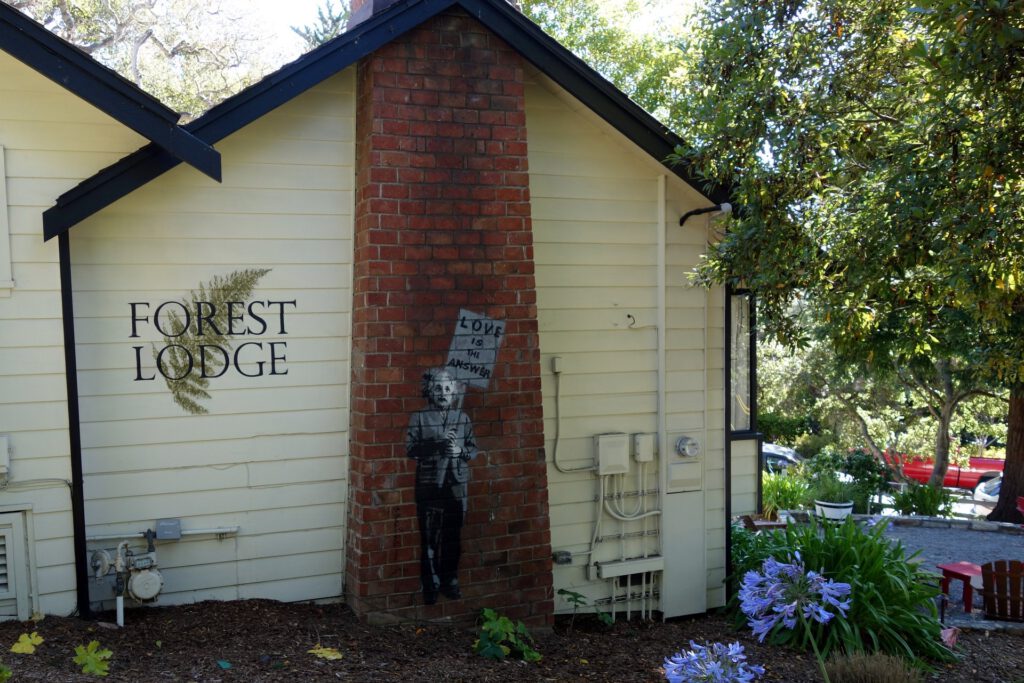
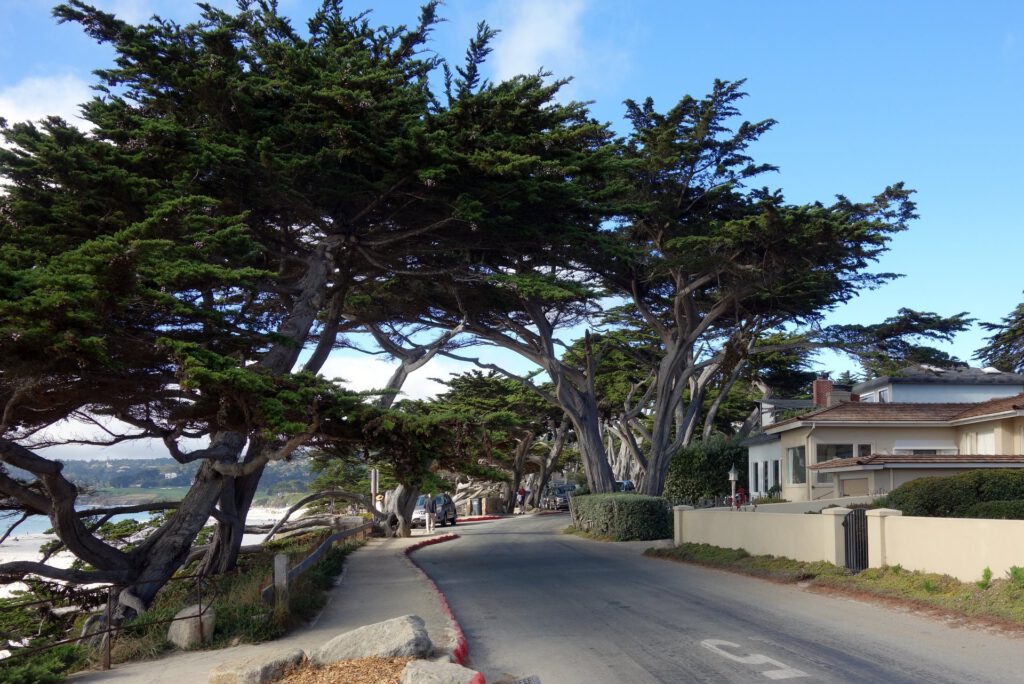
We drove on to Santa Cruz, where we left Highway 1 towards San Jose. Now we were almost at the destination of our trip, the San Francisco Bay Area. Here we wanted to see Silicon Valley and San Francisco before taking the return flight.
Silicon Valley is located south of the San Francisco Bay Area and is one of the most important locations for the IT industry. Just as Hollywood is a synonym for the film business for many, Silicon Valley is a synonym for the IT high-tech industry. This industry initially picked up speed with the development of integrated circuits and their further development into microprocessors and computers, i.e. hardware. Later, software applications, networking via the Internet and the services based on them became increasingly important. The geographical proximity of research and business has proven advantageous for the expansion of this location and many companies based in Silicon Valley have benefited from it and have also been role models for other technology centers around the world. The result so far is impressive and it is safe to speculate whether this development will continue.
As a provider of diverse high-tech solutions, the industry is probably already in the middle of the next major evolutionary step, which should clearly differ from the previous ones: So far, it has essentially been about hardware, network technology and infrastructure to provide (functional) applications, network them and use software to extend the applications to help users achieve business success in a special way. With the infrastructure now available and new, more universal applications that can solve diverse and more complex problems from many areas of life, this development is entering a new era. The key words here are artificial intelligence and machine learning.
To find out more about this development in Silicon Valley and the IT world, we first visited (virtually) the CHM Museum, which claims to be the world’s largest computer museum of its kind.
First of all, I read in CHM’s strategy paper, which is published on their website:
Vision: TO EXPLORE THE COMPUTING REVOLUTION AND ITS IMPACT ON THE HUMAN EXPERIENCE.
Mission: CHM PRESERVES AND EXPLORES THE PROMISE OF TECHNOLOGY TO INFORM, INSPIRE, AND ENGAGE INDIVIDUALS, COMMUNITIES, AND HUMANITY.
So it’s about the effects of the computer revolution and the preservation of its history, as we know it from other museums. It aims to inform, inspire and involve individuals, communities and the general public. I felt addressed, but also asked myself who the technology’s promise refers to? Maybe you can find out later.
First I found out about the development of the computer industry on the website, which is presented chronologically with many illustrative examples and references. For example, the development of microprocessors, storage media and the Internet are shown in detail (link). Then I followed the (virtual) CHM Revolution Tour over 31 stations, from Abacus to networking (Link).
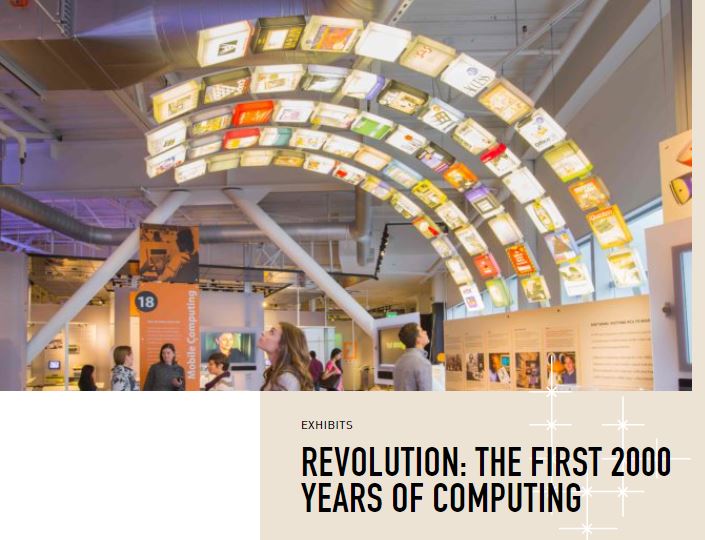
After this virtual visit, I saw numerous interesting publications on the website (link) in playlists, blogs, magazines, etc. I put some of these article markers in order to look at them later.
Overall, I can give positive feedback from this visit. You can get information here in a very entertaining way and the mission of the museum has reached me. Although this was only my first visit to this museum, I feel better informed and also inspired to take a closer look at two key players in the industry, Apple and Google. Since of course you can’t see everything on a half-day visit, I’ll be happy to come back.
We now conclude this virtual trip with a city tour of San Francisco. A double-decker hop-on hop-off bus is a great way to explore this city. Although we were walking most of the time, the bus can bridge longer distances between destination points, or you can use the bus ride for walking breaks and enjoy the view of the city and its surrounding from the upper deck.


